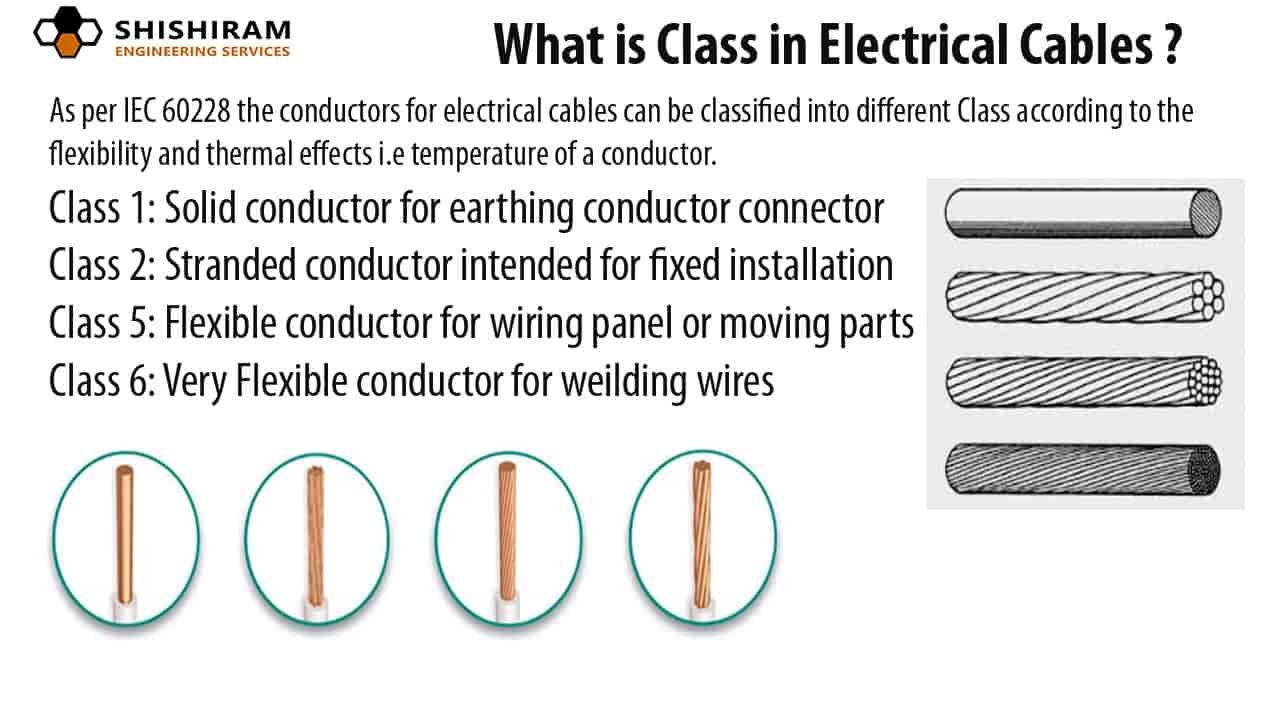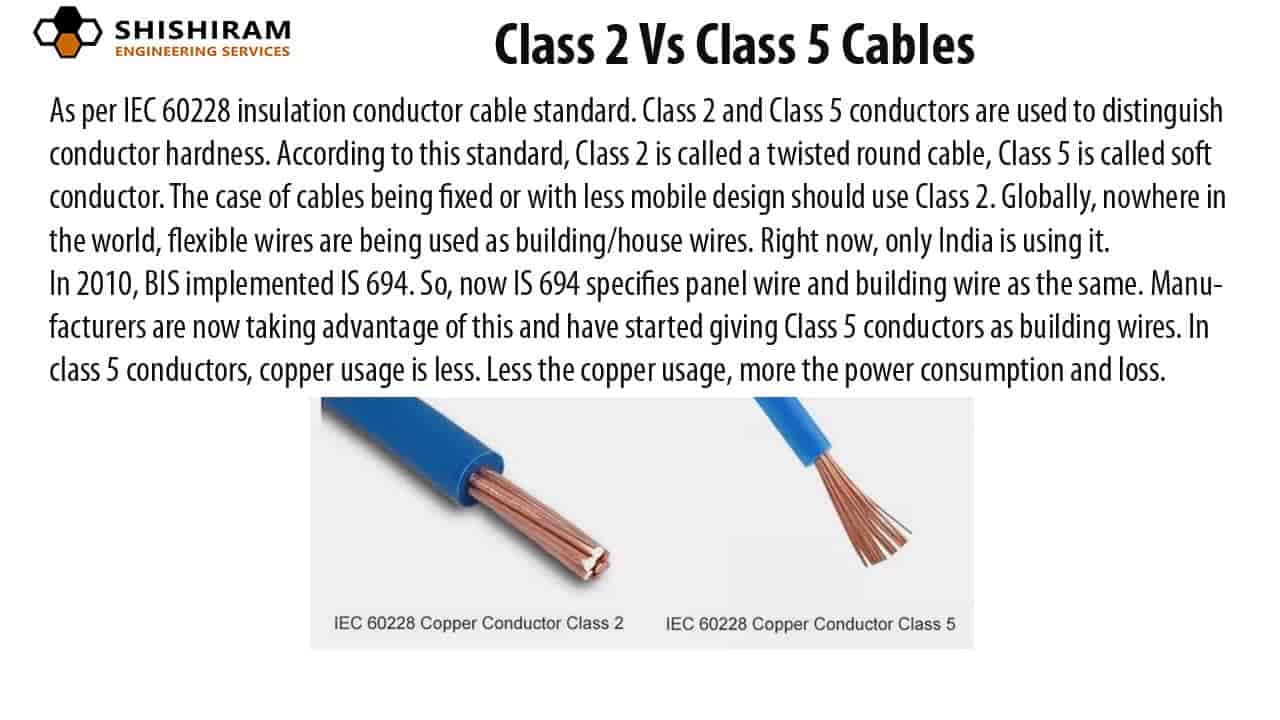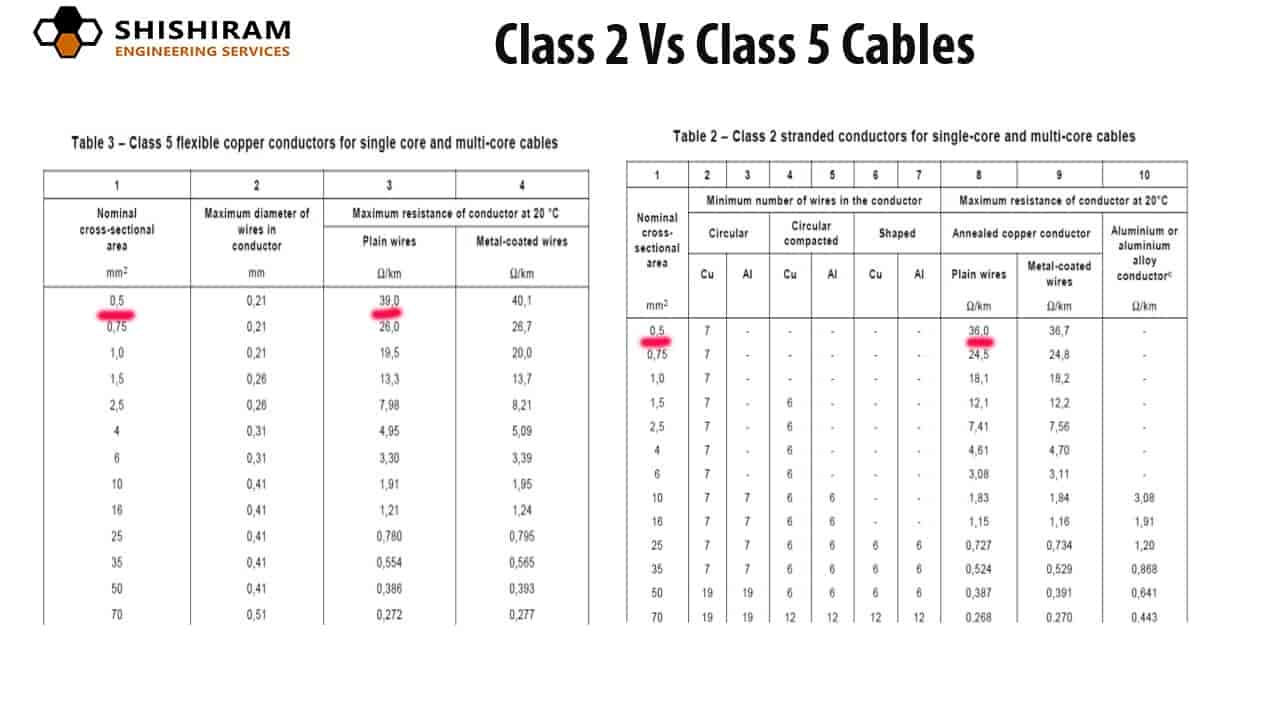Electrical cables can be classified into different Class as per IEC 60228 according to the conductors flexibility and thermal effects.
Class 1 => Solid conductor
Class 2 => Stranded conductor
Class 5 => Flexible conductor
Class 6 => Very Flexible conductor
As per above mentioned IEC 60228, according insulation conductor cable standard Class 2 and Class 5 conductors are differentiated as per its conductor hardness. Class 2 is known as twisted round cable, Class 5 is known as soft conductor. As class 2 cables being harder and less flexible are used for fixed or with less mobile design like permanent building wiring and house wiring. Where as Class 5 being more flexible and less harder, it used for places which is mobile and constantly moves like door wiring in electrical panel.In most of countries except India class 2 wire is used for house wiring, but in India we normally use class 5 or flexible wire for house wiring.
Why we do this? In 2010, BIS implemented IS 694. In IS 694 specifies panel wire and building wire as a similar group of functioning. This actually created an opportunity for Manufacturers. They have started manufacturing and supplying Class 5 conductors as building wires. Actually in class 5 conductors, copper content is less than that of class 2 conducts which make then more flexible wires. Lesser copper content in wire will lead to increase cable resistance and which may in turn increase the power consumption and loss.





Watch Video Tutorial In Malayalam on Youtube
Electrical Drawing Layout For Homes & Residential Building In Kerala
- Safer for Yourself & Your Home Appliances
- Reduce the Energy Bill
- Perfectly Designed for All Your Needs
- Designed for Future Requirements
- Reduce Cost & Wastage of Materials
- Easy Maintenance in future
Shishiram Engineering Services Is an Electrical Engineering Services Provider Offering a Range of Services Including Electrical Engineering Consultancy Services. We Are Professionals Who Will Design Dream Concepts for Your Home with Modern Technology.





Plz.. Explain Less copper content in class 5?
Class 5 resistance per meter is more than class 2 wires. so Energy loss is more in class 5 wires. Class 5 wires has thinner wires are connected in Parallel, but actually, conductors connected in parallel should have lesser resistances. Class 5 wire has more resistance since Class 2 wire is thicker with lesser standards. Class 5 wires need to be more flexible than class 2, to make it more flexible class 5 has lesser copper
Great article! Choosing the right wire for house wiring is crucial for ensuring the safety and efficiency of the electrical system. Gulf wires and Indian wires both have their own unique characteristics and it ultimately depends on the specific needs and requirements of the project. Stranded wires are often preferred for their flexibility and durability, while flexible wires are better suited for applications that require frequent bending or movement. Cable, on the other hand, is ideal for transmitting large amounts of power over long distances. It’s important to consult with a qualified electrician to determine which type of wire is best suited for your specific project.